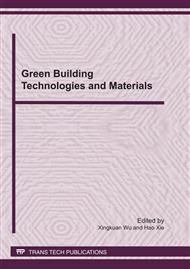p.159
p.164
p.170
p.175
p.179
p.185
p.192
p.198
p.205
Discussion on Humidity Environment Passive Adjustment Methods in Hot Summer and Cold Winter Zone
Abstract:
Humidity is one of the major factors affects the summer thermal environment in hot summer and cold winter zone. This article through calculation and analysis the humidity on environmental thermal comfort and influence of humidity the effect on the energy consumption, explain dehumidifying is one of the most efficient, energy saving measures to improve the hot summer and cold winter zone indoor thermal humidity environment. Aiming at the humidity environment characteristic in hot summer and cold winter zone, puts forward several design strategy of passive dehumidification for reference.
Info:
Periodical:
Pages:
179-184
Citation:
Online since:
April 2011
Authors:
Price:
Сopyright:
© 2011 Trans Tech Publications Ltd. All Rights Reserved
Share:
Citation:


